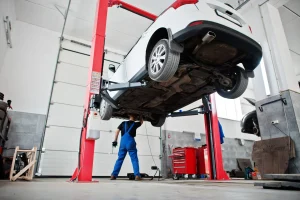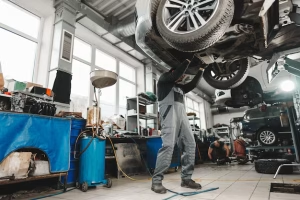Car repairs can be costly and time-consuming, especially when you have to rely on professional mechanics. However, with a little knowledge and a few essential tools, you can handle many common auto repairs yourself. DIY car repair not only saves money on labor costs but also allows you to take control of your vehicle’s maintenance, ensuring it runs smoothly for longer. In this article, we’ll share some practical DIY car repair hacks that can help you save time and money while keeping your vehicle in top shape.
Why DIY Car Repairs are Worth It
Performing car repairs yourself can be highly beneficial. The most obvious advantage is the money you’ll save. Professional mechanics charge for both parts and labor, and labor costs can add up quickly. By handling simple repairs yourself, you eliminate the need to pay for labor, allowing you to purchase quality parts and perform the job on your own.
Another advantage of DIY repairs is the time you can save. Mechanics often have long wait times for appointments and repairs, leaving you without your car for extended periods. When you handle repairs yourself, you can schedule the work at your convenience and get your car back on the road faster.
Finally, DIY car repairs give you the opportunity to learn more about how your car works. The more you understand the inner workings of your vehicle, the better equipped you’ll be to troubleshoot issues when they arise and address them before they become major problems.
Essential Tools for DIY Car Repairs
While you don’t need a professional-grade toolbox to get started with DIY car repair, having a few essential tools will make the job easier and more efficient. Here’s a list of basic tools that every car owner should have:
- Wrench and Socket Set: A good-quality set will help you tackle a wide range of tasks, from changing the oil to replacing parts.
- Screwdrivers: A flathead and Phillips screwdriver are necessary for removing screws and fasteners.
- Jack and Jack Stands: To safely lift your car when working underneath it, a jack and stands are essential.
- Torque Wrench: Ensures that bolts and nuts are tightened to the correct specifications.
- Oil Drain Pan: Useful for draining used oil during oil changes.
- Pliers: Handy for gripping, bending, or cutting wires and small parts.
- Multimeter: Helps diagnose electrical problems like battery issues and alternator failures.
With these basic tools, you’ll be prepared to take on many common car repairs and maintenance tasks.
Time-Saving DIY Car Repair Hacks
Here are some practical hacks that will help you save time while performing repairs on your car:
1. Speed Up Oil Changes with an Oil Drain Plug
When changing your car’s oil, the traditional method involves unscrewing the drain plug and letting the oil drip out. To speed up the process, try using an oil drain plug with a built-in valve. This valve allows the oil to drain faster, reducing the time it takes to complete the oil change.
2. Use a Ziplock Bag for Oil Filter Removal
Removing the oil filter can be tricky, especially if it’s stuck in place. To avoid making a mess, place a ziplock bag over the oil filter before unscrewing it. The bag will catch any residual oil, preventing spills and making the cleanup process easier.
3. Use a Bungee Cord to Hold Up the Hood
If you’re working under the hood and need to keep the hood propped open while you work, a bungee cord is a great tool to use. Instead of relying on the flimsy hood prop rod, secure the hood with a bungee cord to hold it open firmly and free up both hands for repairs.
4. DIY Windshield Wiper Refills with Silicone Lubricant
If your windshield wipers are streaking or leaving behind residue, you can save money by reconditioning the wiper blades yourself. Apply a small amount of silicone lubricant to the rubber blades, and wipe them clean with a cloth. This simple hack can restore wiper performance and extend the lifespan of the blades.
5. Avoid Rust with DIY Rust Remover
Rust can be a major issue, particularly on older vehicles. To remove rust spots on your car’s body, use a DIY rust remover solution made from a mixture of white vinegar and baking soda. Apply the solution to the affected area, scrub with a wire brush, and rinse off the residue. This affordable method can help prevent rust from spreading and keep your car looking better for longer.
6. Use a Plastic Bag to Protect Your Car’s Interior
When working on the interior of your car, such as cleaning the upholstery or fixing the dashboard, it’s easy to get dirt or oil on the seats and surfaces. To prevent this, cover the seats with a plastic bag. This simple trick keeps your car clean while you work, reducing the amount of time spent cleaning afterward.
7. Keep Your Battery Clean with Baking Soda
Battery corrosion is a common issue that can prevent your car from starting properly. To clean the battery terminals, mix baking soda with water to form a paste. Apply the paste to the battery terminals, and scrub with a wire brush to remove the corrosion. This simple hack can help extend the life of your battery and improve your car’s electrical system.
Money-Saving DIY Car Repair Hacks
In addition to saving time, DIY repairs can also help you save money. Here are some hacks that can reduce the cost of car repairs:
1. Buy Parts Online or from Discount Stores
Car parts can be expensive when bought from auto shops, but you can often find better deals online or at discount stores. Websites like Amazon, eBay, and AutoZone offer competitive prices for car parts, and some even offer free shipping. Compare prices online before purchasing any parts to ensure you’re getting the best deal.
2. Use Aftermarket Parts
While original equipment manufacturer (OEM) parts are often more expensive, aftermarket parts can provide the same level of quality at a fraction of the cost. Many aftermarket parts are made by reputable manufacturers and are designed to meet or exceed OEM standards. Consider using aftermarket parts for repairs to save money without compromising on quality.
3. Perform Regular Maintenance to Avoid Expensive Repairs
Preventative maintenance is key to avoiding costly repairs down the road. Simple tasks like changing the oil regularly, replacing the air filter, and keeping an eye on the brake pads can prevent major issues and keep your car running smoothly. Catching small problems early can save you money by preventing them from escalating into expensive repairs.
4. Use DIY Car Diagnostic Tools
Instead of paying for a mechanic to diagnose your car’s issues, consider investing in a DIY car diagnostic tool. These tools, such as an OBD-II scanner, allow you to read error codes and get a clearer idea of what’s wrong with your car. By using these tools, you can often troubleshoot issues yourself or provide the mechanic with more specific information, potentially saving you time and money.
5. Recondition Your Car’s Upholstery
Replacing your car’s upholstery can be expensive, but you can restore its appearance with a few DIY tricks. For example, use a fabric cleaner or leather conditioner to bring life back to worn-out seats. If there are small tears or cracks in the upholstery, a DIY upholstery repair kit can help fix them without the need for professional services.
Conclusion
DIY car repair is a great way to save time and money while keeping your vehicle in good condition. By using a few clever hacks, such as speeding up oil changes, cleaning your battery terminals, and reconditioning wiper blades, you can handle many repairs and maintenance tasks yourself. With the right tools, knowledge, and a little effort, DIY car repair can be an enjoyable and cost-effective way to take care of your car. Whether you’re looking to save money on routine maintenance or fix common problems yourself, these hacks will help you become more self-sufficient and confident in managing your vehicle’s upkeep.



